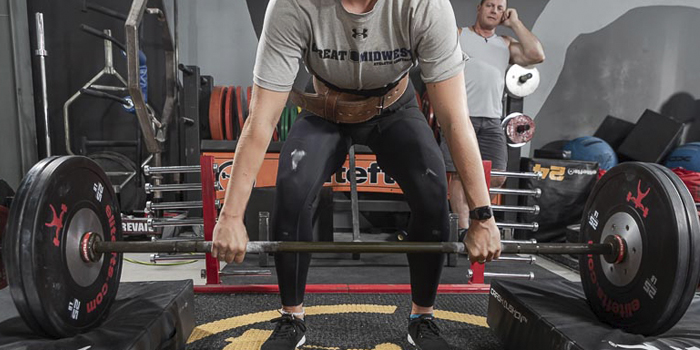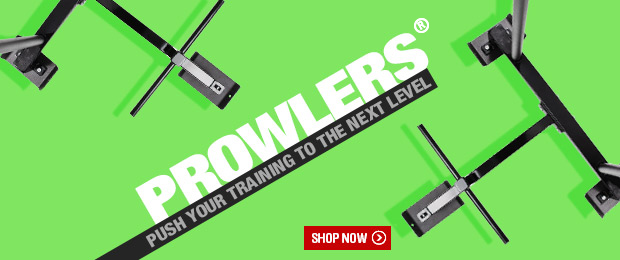
The purpose of this article is to provide a brief outline of how we program for our student-athletes at Oldham County High School (OCHS). This year marked the creation of our school’s first powerlifting club, and I wanted to share our program evolution, what we are trying to instill into the kids, and the principles we use when training them.
This is my first year working with teams in person since 2011, and it has been one of the best experiences of my career thus far.
Previously I was the Head Strength and Conditioning Coach at Southeast Missouri State University. It’s hard to say just how much I have missed being in the weight room, working with student-athletes, and developing a culture of hard work and discipline. In terms of our football team, we are a Kentucky 6A program, and they finished this past year 0-10.
Below I will outline five important principles we teach to our student-athletes.
Five Tenets for High School Programming
1. Don’t Train to Failure in the Big 3
This is a concept that our kids have struggled with. They think every day is the day to go as heavy as possible.
We have used this time to instill the importance of not failing reps, getting work done, grooving our technique, and making small improvements week to week. Because of this, we have yet to put a bar on their backs, but we are close to it with the weightlifting group.
We started small with three-second eccentrics on goblet squats to build technique and show them what it means to place a muscle under tension. Once they showed proficiency on a consistent basis we made the goblet squat an accessory movement and added in the front squat as our primary squatting movement. I love using the front squat as a teaching tool for optimal squat technique and to make them miserable. Front-loaded movements aren’t fun, but that is where we begin - and NOT by training to failure.
With this age group, going lighter is better. We are always leaving at least one rep in the tank, and often it is more like three or four. Let the kids have a win by jumping up five-10 pounds for their final sets each week and then rotate to another movement when you see that they are reaching their limit as a group on that movement.
2. Train Full-Body Every Session
At OCHS, we use the Tier System due to its versatility and balance of movement types across a weekly schedule. We use the typical Total, Upper, and Lower rotation and generally work in three to four tiers. We also include a full-body repetition day that utilizes dumbbells and calisthenics only.
I believe one of the most overlooked elements in many programs is the use of calisthenics. We use calisthenics to a large degree in our program, with push-up variations, pull-up variations, dips, assisted dips, lunges, and Hindu squats making up the majority of it. We aim for a 10-20% increase in calisthenic volume each week to continue building their bodies.
Accessory lifts (both upper and lower body) are rotated every three to four weeks to give them a variety of movements. We also progress these movements from easiest to most complex in terms of stability demands (usually by progressing from bi-lateral to uni-lateral movements). An example would be going from a regular dumbbell bench press to an alternating dumbbell bench press to a one-arm dumbbell bench press. We keep reps in the 8-12 range throughout this process.
3. Coach and Be Coachable
A former boss of mine, Emil Johnson, who is the Head Strength Coach at the University of Hartford, once told me, "There should never be a time in the weight room when you aren’t coaching."
There is always something to fix, whether it be technique or attitude. I have told our kids this and told them to be receptive to it. They need to be coachable. It’s their responsibility to listen and take the information on board and my responsibility (or that of another coach) to ensure they implement it. The point is, being coachable is a lifelong skill. If you’re not giving your best and someone asks for more, you must correct it. If you are asked to do something but don’t know how, you also must let the coach know you have no idea what he’s saying.
It is also vital that coachability works both ways. As coaches, we are not exempt from learning from our trainees. We must take the feedback we get from our student-athletes and adjust. If you cannot alter your approach to get the most out of those you are working with, you have failed as a coach. We must check our ego at the door and learn from what we see and hear to provide the best product possible for our student-athletes.
4. Have Standards
You should have standards in relation to everything that your coaching role involves, right down to how your weight room is maintained. My standards are high with work ethic and technique, but the weight room standards are just as important. The bars should be picked up and put away, as should the dumbbells. The plates should all go on the bar the same way, and the racks should all be set at the same level. The little stuff matters, and if kids begin taking pride in what they have access to, it carries over to how they train and, ultimately, how they play their respective game. Details matter.
5. Be a Teammate
Being a good teammate is essential, but what happens if nobody has ever taught you how to be one? This, again, is something I learned from Emil. The room you’re in should be electric, but getting there is a process.
The first step towards this comes from telling athletes they need to care about and support their teammates. Most think it’s just a case of yelling, “COME ON! PUSH!” but it’s far more than that. Being a great teammate means caring about the guy next to you more than you care about yourself. Sounds crazy, but it’s the truth.
Nobody escapes if everyone in that room cares more about the performance of the guy next to them. When it’s your turn to get under the bar, another teammate has your back - spotting, giving coaching cues (because we teach kids this stuff), and simply getting excited for them. One more rep can become five more because you have a room full of kids behind that athlete.
In my experience, the only thing that matters as a strength coach is delivering a group of teammates. Sure, the Xs and Os matter, but nothing matters if the effort and intensity aren’t from every athlete on that roster. Our job as strength coaches is not only to get them physically strong but to create a cohesive unit of young men/women who are in it for the sake of the jersey (not the name on the back side of it).
The Benefit of the 5 Tenets
I’m excited to see where our training program takes us in the coming months. I can tell you for a fact that our weightlifting group, of which 90% are not student-athletes, has improved a ton. Not only in their technique and weights but in how they carry themselves. Kids who once stared at the floor when they walked now stand tall. To me, that’s the only thing that matters. More teams will come into the fold in the coming weeks and months, and we will continue developing them the only way I know how. One rep at a time.
A High School Strength and Conditioning Program
Below I have included a sample week of our training program using the Tier System I mentioned earlier. Hopefully, this gives some of you some inspiration and ideas for your team program.
| Monday | Sets x Reps | Tuesday | Sets x Reps |
| 1. Box Jumps | 10 total | 1. Broad Jumps w/ pause | 10 total |
| 2. Modified Sumo Deadlift | 4 x 5 | 2a. Bench Press | 4 x 5 |
| 3a. Close Grip Incline Bench press | 3 x 6 | 2b. DB U-B Row | 4 x 8 |
| 3b. Chin-ups | 3 x 3-12 | 3a. DB Goblet Squat | 3 x 10 |
| 3c. DB Step-ups | 3 x 6 | 3b. Plate Front Raise | 3 x 12 |
| 4a. DB Shrugs | 2 x 12 | 3c. Pull-ups | 3 x 3-5 |
| 4b. Seated Plate Twist | 2 x 12 | 4. Barbell Curls | 50 total |
| 4c. Military Sit-ups | 2 x 12 | 5. High Rep Abs |
| Thursday | Sets/Reps | Friday | Sets/Reps |
| 1. DB Squat Jumps (Pause each rep) | 3 x 6 | 1a. Alternating DB Bench Press | 4 x 8 |
| 2. Front Squat | 4 x 5 | 1b. Inverted Row | 4 x 6-12 |
| 3a. Barbell Military Press | 3 x 6 | 2a. DB Back Squat | 3 x 8 |
| 3b. DB Backward Lunge | 3 x 8 | 2b. M-R Hamstring Curl | 3 x 6 |
| 3c. DB Chest Supported Row | 3 x 8 | 2c. 3 Way Shoulders | 3 x 12 |
| 4. Seated Goodmorning | 2 x 10 | 3a. Close Grip Push-ups | 2 x 8-25 |
| 5a. Front Bridge | 2 x 30s | 3b. DB Incline Curls | 2 x 10 |
| 5b. Side Bridge | 2 x 15s | 3c. Leg Lifts off Bench | 2 x 12 |

Jeff Lee is a Strength and Conditioning Coach at Oldham County High School. He formerly was the Head Strength and Conditioning Coach at Southeast Missouri State University. He owns Monstrousitous Strength and Performance.










1 Comment